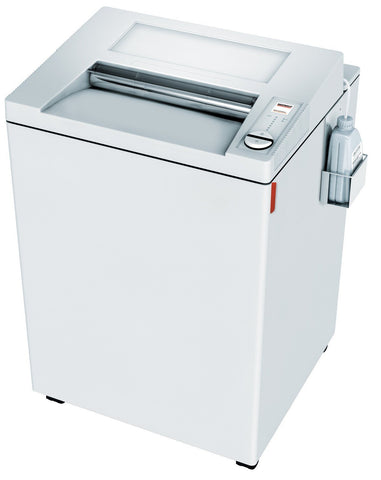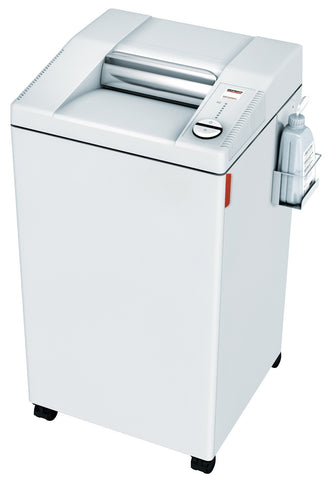End of the financial year looms near. It's time to prep for the new and get rid of the old. Documents, that is.
Document storage recommendations provide solid guidelines on what to keep and for how long. When that lifecycle is over, protect yourself and your clients by disposing of documents thoroughly.
Identity theft and fraud statistics reflect a rise of 16 percent in 2016. Now, more than ever, destroying documents makes or breaks a company.
To keep abreast of trends and on top of security, consider the following tips for finding a paper shredder:
Choose the Right Paper Shredder
Not unlike the Goldilocks story, finding the right office equipment comes depends on your needs. Too much machine is a waste of resources. Too little machine fails to protect adequately.
Take the time to do some research. Compare the different types of machines available. Determine what you expect from a paper shredder.
Consider key features, such as:
- Size
- Capacity
- Materials
- Security
- Noise
- Energy options
- Safety
Size
Size represents two different factors. First, the physical size and shape of the machine. Second, the volume of the bin or receptacle.
Size plays an important role in choosing a paper shredder.
A large machine takes up more space and clutters your office. Small machines can rest comfortably on a desk. Larger machines require dedicated floor space.
The volume of the receptacle reflects how often it will need to be emptied, and how hard that may be. Generally speaking, a paper shredder should be large enough to house a day's worth of shredding.
One that is smaller than that requires coordinated staff to take care of the waste. If it's too large, it becomes a waste of resources.
Capacity
Capacity (as opposed to size and volume) measures how much material can be put in a shredder at once. Sometimes referred to as sheet capacity, the optimal capacity does the job in the fewest steps.
This feature also reflects what materials can be shredded. A larger feed aperture will allow bigger materials through. However, the shredding mechanism might not be able to handle it.
As a rule of thumb, aim for a device that will destroy one common quantity of data at a time. One whole file would be the quantity goal. When an office handles multiple items for a single person, this gets broken down a bit further.
Larger industrial shredders can handle years of files in a single go. If your office calculates shredded waste in tonnes, then these are the best sizes.
Materials
Materials, as noted before, are important too. A stronger shredder will handle credit cards, CDs, and even paperclips or staples.
Obviously, unless your office handles a high volume of discs and cards, a paper rated machine will fit the bill. Devices built for handling those little bits of metal save more than time, though.
The time needed to search, find, and remove all the staples and paper clips can be costly. Repairing a machine jammed with those items gets expensive.
High-end industrial shredders, such as the DestroyIt 5009 Cross Cut Shredder feature conveyors, and can handle different materials. Designed for information-intensive archives, these things dream of growing up to be wood chippers.
Security
The DIN (German Institute for Standardization) sets security standards for a paper shredder. These are represented by levels P-1 through P-7.
Papercut creates the largest factor influencing these levels. There are three cut types.
- Strip-cut
- Cross-cut
- Mirco-cut
Strip-cut meets standards for P-1 and P-2 levels. Strip-cut works quickly and quietly because the cuts are along lines and produce strips. Strip-cut can be recovered by most computer programs and scanners, which is why this only works for low levels.
Cross-cut covers security P-3, 4, and 5. Resembling confetti, the output gets cut into diamond shapes from angled blades. Machines providing cross-cut security form the mid-range of price points.
Mirco-Cut provides the standard for P-6 and P-7. Here, smaller blades work in tandem much the same as the cross-cut to reduce paper into near particles. Micro-cutting takes time and is expensive.
The DestroyIt 4014/2 SMC meets NSA and DOD security specs. This micro-cut machine also uses automatic drives and gravity feed to pull in materials with less monitoring.
Noise
Noise affects an office in various ways. Loud machines make it hard to concentrate on work. They can also represent a health hazard to hearing over time.
When choosing a paper shredder, consider how far away from work areas it will be located. Figure out what types of soundproofing will be around the machine, or the room the machine is in.
Aim for less than 60 decibels to have a better office environment.
Energy Options
Power saving features help cut costs and protect the environment. Machines with standby and auto-off features provide savings in energy. They also offer extra security that a machine won't grind down when not in use.
A machine that works hard to eat through too much material takes more energy. Getting the right paper shredder will reduce your bills and stress levels.
Safety
Paper shredders need to be handled carefully. After all, boxes filled with rotating blades may lead to injury. Safety features have come a long way from early models.
Safety locks prevent the machine from being operated in improper conditions. Safety sensors halt the machine when living matter is detected. Safety flaps cover sharp objects to reduce injury and prevent throwback of metal objects.
Place industrial machines in separate areas to prevent accidental use. Avoid wearing loose clothing. Always remain alert when working with a paper shredder to avoid injuries.
Shop Our Products
Contact us with specific questions. We can make recommendations to help you find that 'just right' paper shredder. Our staff knows the ins-and-outs of the shredding business.
While your there, take a look through our blog. We're always adding new content to help you understand the ever-changing office environment.




